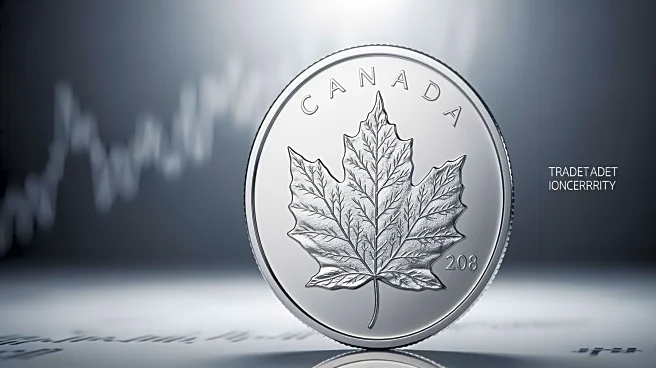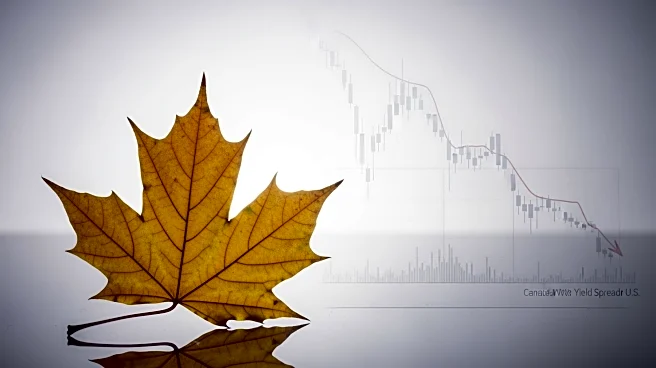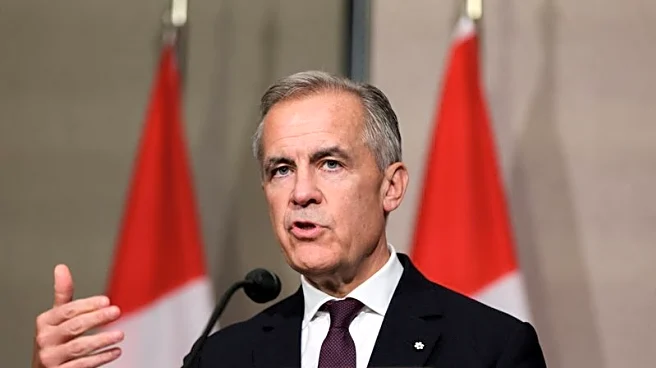What's Happening?
The Canadian dollar, commonly referred to as the loonie, is expected to strengthen over the next year as trade uncertainties potentially diminish and the U.S. Federal Reserve continues to cut interest
rates. According to a Reuters poll conducted between October 31 and November 5, 2025, involving 38 foreign exchange analysts, the loonie is forecasted to appreciate by approximately 3% to 1.37 per U.S. dollar in three months and by around 4.5% to 1.35 in twelve months. This anticipated strengthening is partly attributed to the expectation of a weaker U.S. dollar as the Federal Reserve cuts rates, while the Bank of Canada (BoC) has signaled a possible end to its easing campaign. Recently, the BoC lowered its benchmark interest rate to a three-year low of 2.25% to support the Canadian economy, which has been adversely affected by a U.S.-led trade war. Canadian Prime Minister Mark Carney has also committed significant funds to counter U.S. tariffs and diversify trade, as outlined in his recent budget proposal.
Why It's Important?
The potential strengthening of the Canadian dollar has significant implications for the Canadian economy and its trade relations, particularly with the United States. A stronger loonie could enhance Canada's purchasing power on the global stage, potentially reducing the cost of imports and benefiting Canadian consumers. However, it could also pose challenges for Canadian exporters by making their goods more expensive in foreign markets. The anticipated changes in currency value are closely tied to broader economic policies and trade agreements, such as the United States-Mexico-Canada Agreement, which is up for review in 2026. The resolution of trade uncertainties could further stabilize the Canadian economy, allowing it to recover from the impacts of the trade war.
What's Next?
As the Canadian dollar is projected to gain strength, stakeholders in the Canadian economy, including businesses and policymakers, will likely monitor developments in trade negotiations and interest rate policies closely. The Bank of Canada's potential cessation of its easing campaign could signal a shift towards more stable economic conditions. Additionally, the upcoming review of the United States-Mexico-Canada Agreement in 2026 may play a crucial role in shaping future trade dynamics and economic policies. Market participants will be keenly observing these developments to adjust their strategies accordingly.













